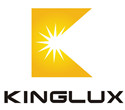| TEL:
+86 510 82123195
|
| Mobile: |
+86 18168862789
|
| FAX:
+86 510 84602998
|
| Email: |
info@kingluxlens.com
|
| MSN:
kingluxlens@hotmail.com
|
| Skype:
kingluxlens
|
| Q Q:
2852820700,2852820701,2852820699
|
|
|
| |
Knowledge
|
Current Location: Home >
News >
Knowledge
|
|
optical light effect and application difference between LED lens and reflector
|
 |
The optical effect and application difference between the lens and the reflector:
The effect of the lens is generally no side spot, the light shape is more beautiful, because the TIR design, the light extraction efficiency is relatively high.
The lens is an optical component made of a transparent material and having a spherical surface. The lens is composed of several lenses, and there are two kinds of plastic lenses and glass lenses. The glass lens is more expensive than plastic. Generally, the lens structure for the camera is: 1P, 2P, 1G1P, 1G2P, 2G2P, 4G, etc., the more lenses, the higher the cost. Therefore, a good quality camera should be a glass lens, its imaging effect is better than plastic lenses, playing an important role in astronomy, military, transportation, medicine, art and other fields.
The main material of the LED lens is PMMA, which has good plasticity and high light transmittance (up to 93%). The disadvantage is that the temperature resistance is relatively low, only about 90 degrees. The secondary lens is generally an internal total reflection design (TIR), and the lens is designed to be concentrating in front of the lens, and the tapered surface can collect and reflect all the side light, and the overlapping of the two rays You get the perfect light utilization and beautiful spot effect. The TIR lens has an efficiency of more than 90% and is mainly used in small-angle lamps (beam angle <60°), such as spotlights and ceiling lamps.
Reflective cup
Reflective cup refers to a reflector that uses a point source light bulb as a light source and needs to be concentrated for illumination at a long distance. Usually, the cup type is commonly called a reflector cup.
Usually, the LED light source has an illumination angle of about 120°. In order to achieve the desired optical effect, the lamp sometimes uses a reflector to control the illumination distance, the illumination area, and the spot effect.
Metal reflector: It needs to be finished by stamping and polishing process. It has the memory of deformation. It has the advantages of low cost and temperature resistance. It is often used for low-grade lighting requirements.
Plastic Reflector: One-time demoulding, high optical precision, invisible memory, moderate cost, often used in high-temperature lighting requirements for low-temperature lighting.
|
|
|


